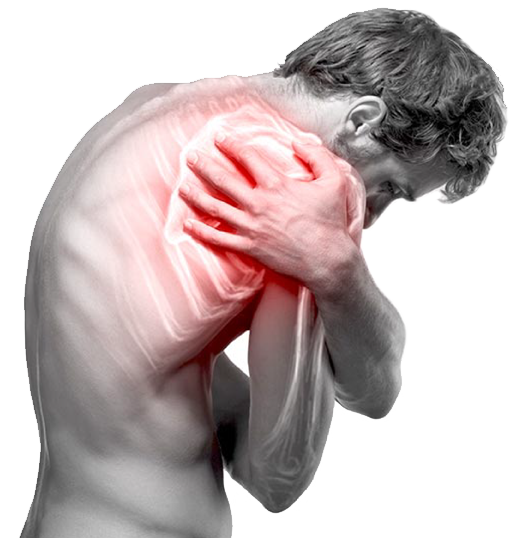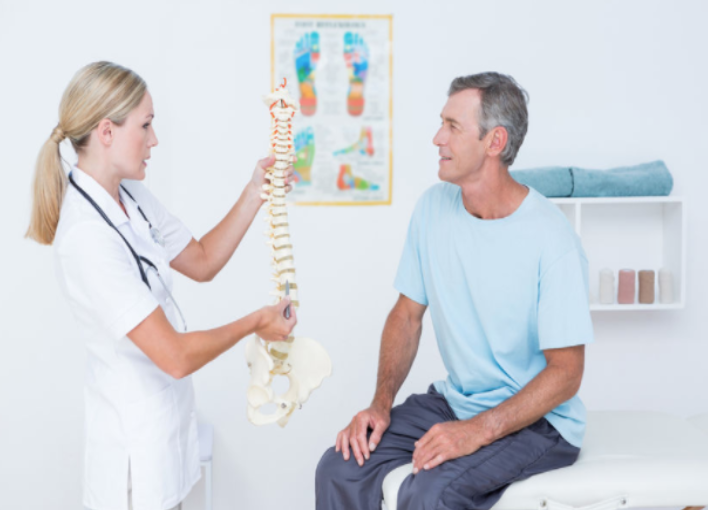Low Back Pain

Low Back Pain – Causes, Symptoms, and Treatment
As a top rated medical practice in NYC, our back and neck pain specialists at VIP Centers routinely diagnose and treats lower back pain by utilizing the most advanced and non-surgical treatments options. At VIP Medical Group, we take a holistic view of the patient and our team reviews each case to determine the best course of action and to develop a custom treatment plan designed to help each individual patient to achieve long-term pain relief. Our goal is to provide every patient with the most advanced and comprehensive therapy available. We use the most advanced, cutting edge technologies in non-surgical options, minimally invasive injections and regenerative medicine to effectively treat a multitude of conditions causing low back pain, without the need for surgery.

Causes of Lower Back Pain
There are many causes of low back pain, some may be age related such as arthritis or other medical conditions including injuries or chronic conditions. Some people may experience acute or chronic low back pain.
Sprain or strain of ligaments or muscles
Lumbar (lower back) muscle or ligaments strains and sprains are the most common causes of low back pain. When the lumbar spine is strained or sprained, the soft tissues become inflamed. This inflammation causes intense pain and may lead to muscle spasms. When muscles go into spasm and do not get enough blood flow through them, they became weaker. Lumbar muscle strain occurs when muscle fibers are abnormally stretched or torn. When ligaments are torn from their attachments it causes lumbar sprain. Soft tissues sprain and strains can result from a sudden movement and injury or from gradual overuse.
Top 5 causes of low back sprain and strain
- Improper lifting or lifting a heavy object
- Sudden movements such as twisting and pulling or falls
- Poor posture
- Sports injuries, playing sports that involving pushing and pulling
- Improper exercising
Lumbar herniated disc
A herniated lumbar disc, often called a “slipped disc” is a cushioning disc that breaks down and the inner core leaks out through the outer portion. The jelly-like center of a lumbar disc can break through the tough outer layer and put pressure on a nearby nerve root, which then irritates the nerve and causes significant pain. When intervertebral disc herniates, it can press on the spinal cord or spinal nerves. The herniated part of the disc is full of proteins that cause inflammation when they reach a nerve root, and inflammation as well as nerve compression cause nerve root pain. The discs walls are also richly supplied by nerve fibers, and a tear through the wall can likewise cause severe pain, weakness, numbness, or changes in sensation.
Degenerative disc disease
Degenerative disc disease is a spinal condition caused by natural age-related changes to the discs that cushion the vertebrae in the spinal column. It can result in the discs losing height and developing small tears in the outer layer. The loss of fluid in your discs makes them thinner and narrows the space between the vertebrae. Small cracks in the outer wall of the disc can also cause the disc to bulge which may start the degeneration process.
Spinal stenosis
Spinal stenosis of the lumbar region is essentially a condition that describes the narrowing of the spinal column in the lower back (lumbar spine), placing pressure on the spinal cord and nerves. This issue can lead to:
- pain
- numbness
- tingling
- weakness and sensory loss
- muscle fatigue
- burning sensation
Lumbar spinal stenosis affects nerves in the lower back, that is why the symptoms can travel from the lower back through the length of the nerve pathway, reaching down the buttocks and legs and sometimes into the feet.
Spondylolisthesis
Spondylolisthesis is a degenerative spine condition that can cause severe pain and stiffness in the neck or back, making simple tasks such as walking, bending or picking up something from the floor very difficult. A spondylolisthesis diagnosis is described by the displacement of one of the bones of the spine over another above or below it. Think of it as a misalignment of the spine vertebrae.
This forward slipping of the vertebrae may affect the nerves and then causing pain. Spondylolisthesis is found most frequently within the lumbar (lower) region of the spine and does not always give noticeable symptoms, however when it does, chronic low back pain is the most common symptom. The pain can be mechanical (structural) or compressive (pressure on nerves). Other causes can be due to injury or a fracture, in which the vertebra can start to shift out of place if the stress fracture weakens the bone and it is unable to maintain proper positioning. Typically conservative treatment is generally effective.
Skeletal irregularities
Congenital deformities of the spine such as scoliosis, kyphosis or lordosis can cause lower back pain as they upset weight distribution and strain soft tissues: muscles, ligaments and nerves.
Traumatic injury
Unfortunately, trauma to the low back (lumbar spine) is very common. People find hundreds of ways to injure their low back. Car accidents, sports injuries, workplace injuries, falls and other dramatic incidents can cause vertebral fractures, herniated discs and nerve damage. Treatment depends on the severity of the injury, however the majority of low back pain can be treated with conservative methods. It’s very important to treat trauma related back pain early and to have an expert pain management doctor treat it before the condition worsens, which can lead to surgery. However, if addressed sooner rather than later, conservative measure can be very effective. Sometimes symptoms don’t always appear immediately after an accident, however, it’s important to have a medical doctor examine you to ensure there is no further damage.
Fibromyalgia: a condition that causes muscle aches and fatigue
This chronic pain syndrome involves general muscle pain and fatigue, which can translate into lower back discomfort. This condition can be managed in several ways and is quite complex due to the many reasons why it develops in patients.
Osteoporosis
Osteoporosis is a disease in which bones become very weak and more likely to break. As we get older, our bones get thinner and bone strength decreases. Furthermore, the weakened vertebrae can break – an injury called a compression fracture – and lose about one-half of their height. In many cases compression fractures are painful, some people may experience severe pain and discomfort. Compression fractures are often seen in older patients, but younger patients can get them as well, especially in athletes (high impact sports) or patients who are nutrient deficient.
Sciatica
Sciatica or inflammation of the sciatic nerve is the term used to characterize low back pain which radiates down the leg. The sciatic nerve is the largest nerve in the body and runs from the lower part of the spinal cord, through the buttock and down the back of the leg to the foot. The medical definition for sciatica is acute nerve root compression or radiculopathy which is pressure on the sciatic nerve resulting in symptoms of pain, numbness, pins and needles or muscle weakness. The causes of pressure can be due to many reasons such as a slipped disc, also known as a herniated or prolapsed disc, disc degeneration which is wear and tear, or muscle tension for example from piriformis syndrome.
Infection and tumors
Most patients with back pain have a benign condition, however infections or tumors must be considered during an initial patient evaluation because ignored or misdiagnosed them can have serious consequences. Extremely rare but very serious, infection called osteomyelitis can affect the vertebrae and cause pain. Cancer is also an uncommon cause of back pain, however can be destructive if tumors form along the spinal cord.
What are the symptoms of low back pain?
Most people experience discomfort and pain primarily in their low back area, however pain may spread to the buttocks, thighs, or knees. Common symptoms of back pain may include stiffness, tightness, aching, pressure, tingling, or burning, stabbing or shooting pains. Some people may also experience muscle spasms. The symptoms are typically more intense or noticeable when bending or arching the back, when lifting heavy objects, or when sitting or standing for long periods of time. A complex network of spinal tendons, ligaments, bone, discs or muscles near the lumbar spine can be damaged by a number of factors. The first step toward identifying the source of back pain is paying attention to the specific symptoms.
Here are the TOP 10 symptoms of low back pain:
- Dull and achy pain
- Numbness or weakness
- Muscle spasms
- Local soreness
- Pain that radiates down one leg or to the groin, buttock or upper thigh
- Stiffness and difficulty moving or walking
- Trouble sleeping
- Tingling or “pins-and-needles” sensations
- Limited flexibility or range of motion of the back
- Loss of bowel or bladder control in severe cases
What are the Non-Surgical Treatment Options For Lower Back Pain?
At VIP Centers, our team of spine and pain management experts creates customized treatment plans to fit your individual needs and preferences. We offer conservative and non-surgical treatments designed to accurately diagnose the underlying cause behind your lower back pain, so that you can feel better faster.
Lumbar Epidural Steroid Injection
Epidural steroid injections also called epidural corticosteroid injections are a commonly used option for treating low back pain conditions associated with inflammation. Steroids, which are strong anti-inflammatories, are used to reduce the swelling and inflammation caused by spinal conditions such as Spinal Stenosis and Herniated/Bulging Discs or Sciatica. Corticosteroid injections can reduce inflammation and can be effective when delivered directly into the inflamed and painful area. The pain relief can last from days, months and sometimes a few years, allowing your spinal condition to improve with comprehensive treatment plan, including a physical therapy and an exercise program.
Often people ask if cortisone is safe and the good news is that using cortisone for epidural injections is very safe and effective. It’s a great option to reduce pain and likewise help decrease inflammation in the injured and affected area.
How is the Epidural Steroid Injection (ESI) performed ?
At the time of the procedure, the patient lies face down on an x-ray table with a pillow placed under the abdomen for comfort and to flex the back. All procedures are performed using a C-arm, which is a fluoroscopic machine to help visualize the spine to find the exact area to inject. A small amount of local anesthetic is used to numb the treatment area and to keep the patient comfortable throughout the procedure. With the guidance of the fluoroscope, the physician carefully guides the needle to the epidural space near the affected nerve root. The fluoroscopy machine allows the doctor to watch the needle in real-time on the monitor, ensuring that the steroid medication is delivered as close to the inflamed nerve root as possible. A contrast dye is usually used to confirm the correct location of the needle, followed by a mixture of steroid and local anesthetic to bathe the painful nerve root with soothing medication. Once needle is removed a small band-aid is applied and typically most patients can walk around immediately after the procedure.
Depends of the condition treated it may be necessary to repeat the procedure as many as three times to provide the full benefit of the medication, however many patients feel significant relief from only one or two injections.
Lumbar Facet Joint Injection
Referance: https://treatingpain.com/treatment/facet-joint-injections
Facet joints are very small joints at each segment of the spine that provide stability, flexibility and help guide motion. The facet joints can become inflamed or irritated and painful due to degenerative conditions such as arthritis of the spine, as well back injury, or mechanical trauma and stress to the back. A lumbar facet joint injection is a relatively simple procedure that is usually safely performed in an office settings. Initially, a local anesthetic is applied to numb the skin to keep the patient comfortable throughout the procedure, then a small spinal needle is inserted into the facet joint. Facet joint injections combine a local anesthetic and a corticosteroid anti-inflammatory medication. This mixture is injected using a fluoroscopic (x-ray) guidance and helps to relieve pain, swelling and inflammation coming from the arthritic facet joint. Facet joint injections are generally limited to three within a six-month time frame, however in many cases only one or two injections are required to obtain full benefit.
Trigger points
Trigger points happen when the muscle fibers in a particular spot become hyper-irritated, producing acute pain in a very specific location. Development of trigger point can start when muscle fibers are torn in either a single injury or as the result of repeated small traumas from repetitive stress injuries. The comparison or damage to the muscle fibers results in extra stress being put on the muscle, manifesting as pain.
The pain due to trigger points is often felt in the same area, however it can also radiate and be felt in a completely different part of the body. We call this a referral pattern of pain.
The procedure starts by the physician examining the lower back and determining the areas of tenderness and pain. Once the trigger point is located, it takes an expert in pain management to really know how to “unlock” this tightly bound set of muscles. Using a small needle to deliver a dose of cortisone mixed with anesthetic medication, the medical doctor will directly inject the trigger point.
This helps to decrease swelling and inflammation in the area. The needling and injection process is fast, taking only just a few minutes. Often we try to address a larger area at the same time, so multiple injections sites are performed to help with pain relief.
Dry needling is likewise performed at the same time, this “needling” action of the procedure is a key to successfully treat the “locked” trigger point. Thus, if you are sensitive or have allergies to any of the medications used in the injection, the dry-needle technique can provide relief as well.
The results of trigger point injections can last for many weeks and sometimes even months. Several injections may be needed, however, most patients only need 2 or 3 to give full relief and optimize their results.
Request an appointment
We are experts in minimally invasive procedures with zero downtime, allowing you to resume regular activities the same day. Leave us your information, and we will reach out to help you verify your insurance coverage, and schedule an appointment with one of our vein specialists. We are a non-participating provider with BCBS, empire, Aetna, GHI, Cigna, United Healthcare, Oxford, BCBS Horizon, Magnacare and we will work directly with your insurance company to help you get treated with no surprise bills.

